Landscape
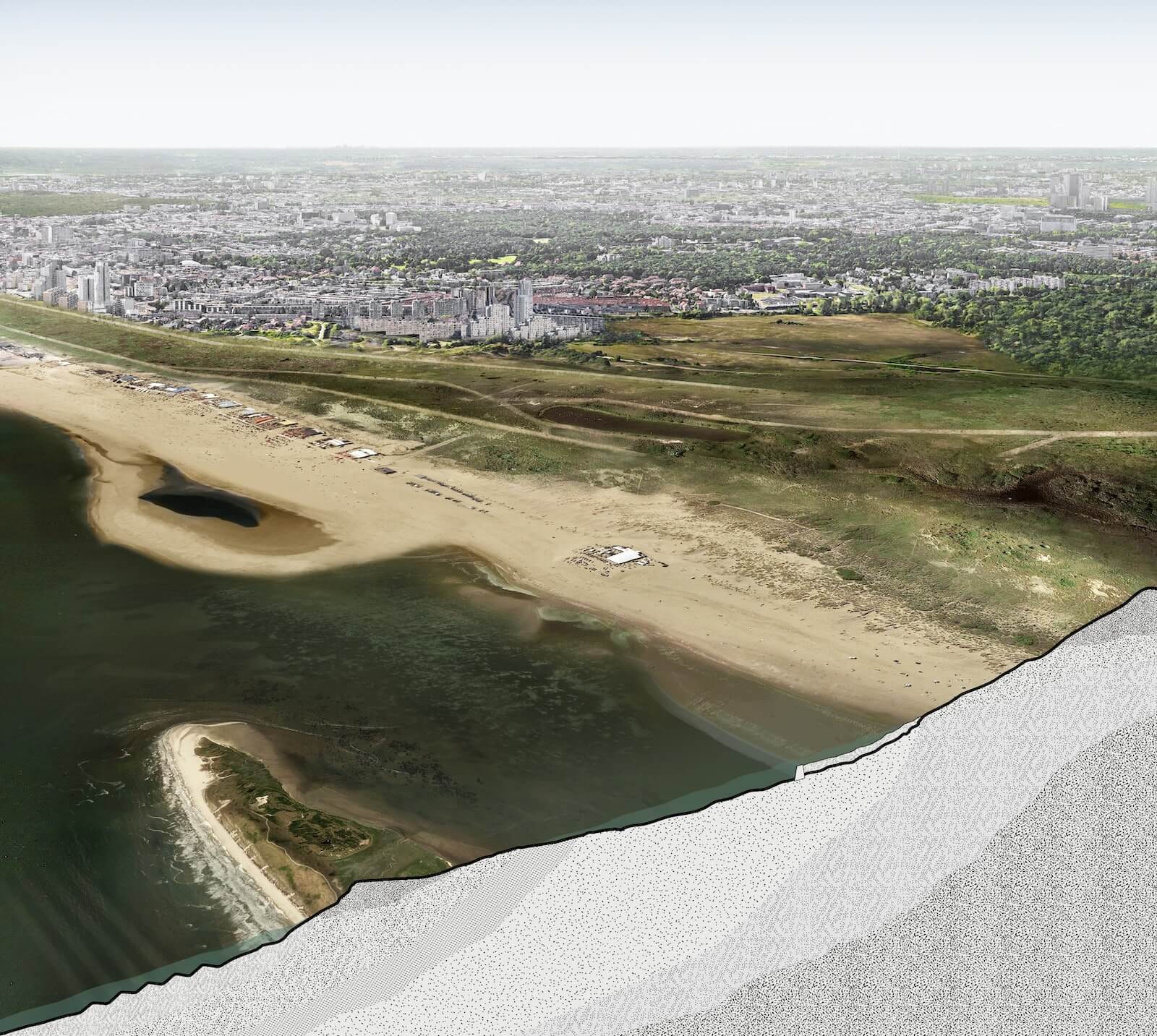
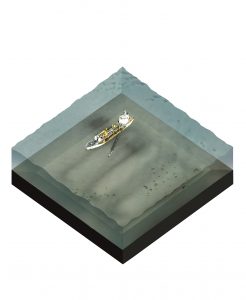
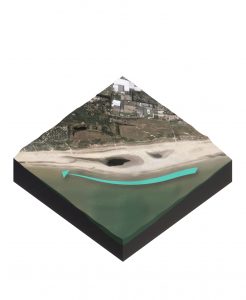
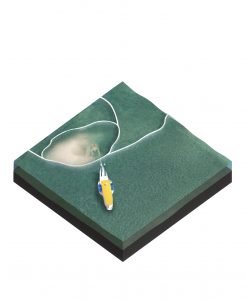
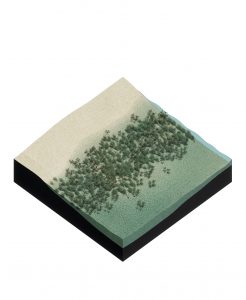
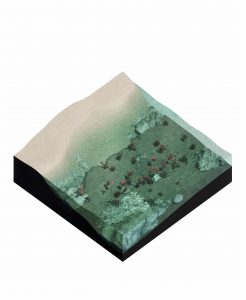
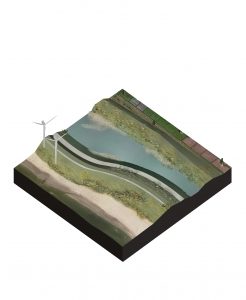
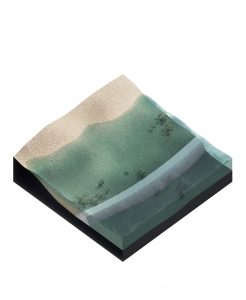
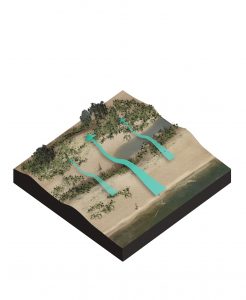
Since ancient times, sandy coasts have attracted human activity. They provide natural coastal defenses, form attractive living environments, protect potable water resources, and accommodate economic activities including ports, commercial fisheries, and recreation.
Sandy coasts are highly dynamic environments with a unique range of habitats. They typically occur as beaches in enclosed bays between rocky headlands or as long stretches of sand within beach-dune systems. Waves, winds, and currents transport sand to the coast, while sea level rise, subsidence, and interruptions in longshore drift create new demands for sediment. The morphological development of the coast thus depends on the balance of the supply and demand for sediment and creates the conditions for dune and foreshore habitats.
Robust sandy coasts provide a natural barrier against storm surges and enhance climate resilience. Yet many shores experience significant pressures from coastal squeeze: they lie in the shrinking zone between growing urban populations and retreating shorelines, impacted by sea level rise and human intervention. Sustaining and supporting sandy coasts is an urgent issue, while in many places fragmented beach management poses an additional hindrance to coordinated, regional coastal strategies.
Building with Nature in sandy coasts focuses on interdisciplinary collaboration in sand management and nourishment strategies. These approaches focus on minimizing nourishment impacts and coastal management alternatives through preserving beaches, growing dunes as coastal barriers, and enhancing habitats, for instance using new techniques of sand borrow and placement.
Ecological Benefits
Sandy coasts provide breeding grounds, resting areas, and nurseries for a variety of plants, animals, and other organisms. With regular wave action and variable gradients of wetness, functioning sandy ecosystems host a range of habitats including those on beaches and dunes, in the intertidal zone, underwater, and offshore. As dynamic environments with nutrient-poor soils, unstable substrates, and wind-driven salt spray, sandy coastal landscapes can exhibit harsh conditions; yet moving sand and rapidly changing conditions can also yield a characteristic biodiversity.
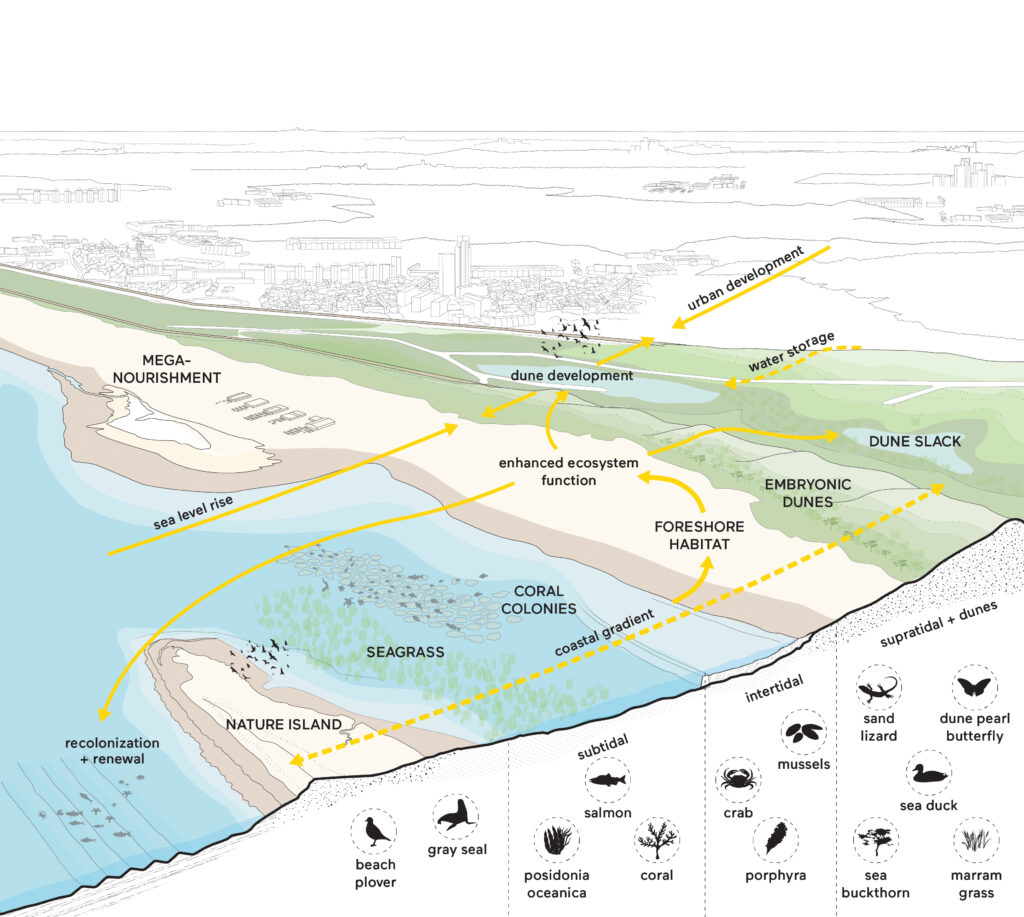
Places to live, work and visit
Sandy coasts play a principal role in the culture of coastal societies and their urban economies. Landscapes with great aesthetic value, they sustain ports, construction trades, and fisheries; they also attract tourism and commerce. These economic activities, and the long history of their development, underpin the economic value of sandy coasts today. The landscape provides numerous ecosystem services that sustain local populations. Sand dunes absorb and filter rainwater, replenishing the freshwater wedge and potable water supply. The coastal sea supplies fish and shellfish, vital food resources, and is increasingly a testing ground for renewable energy generation from wind and waves. Not least, sandy coasts create opportunities for tourism and recreation as beaches provide incomparable experiences in every season. Whether restive beach visits or exploratory adventures, these shores host leisure and sport, and facilitate nearshore activities such as swimming and fishing. In many places today, sandy coasts are mined to supply raw materials for construction, which threatens their sustainability.
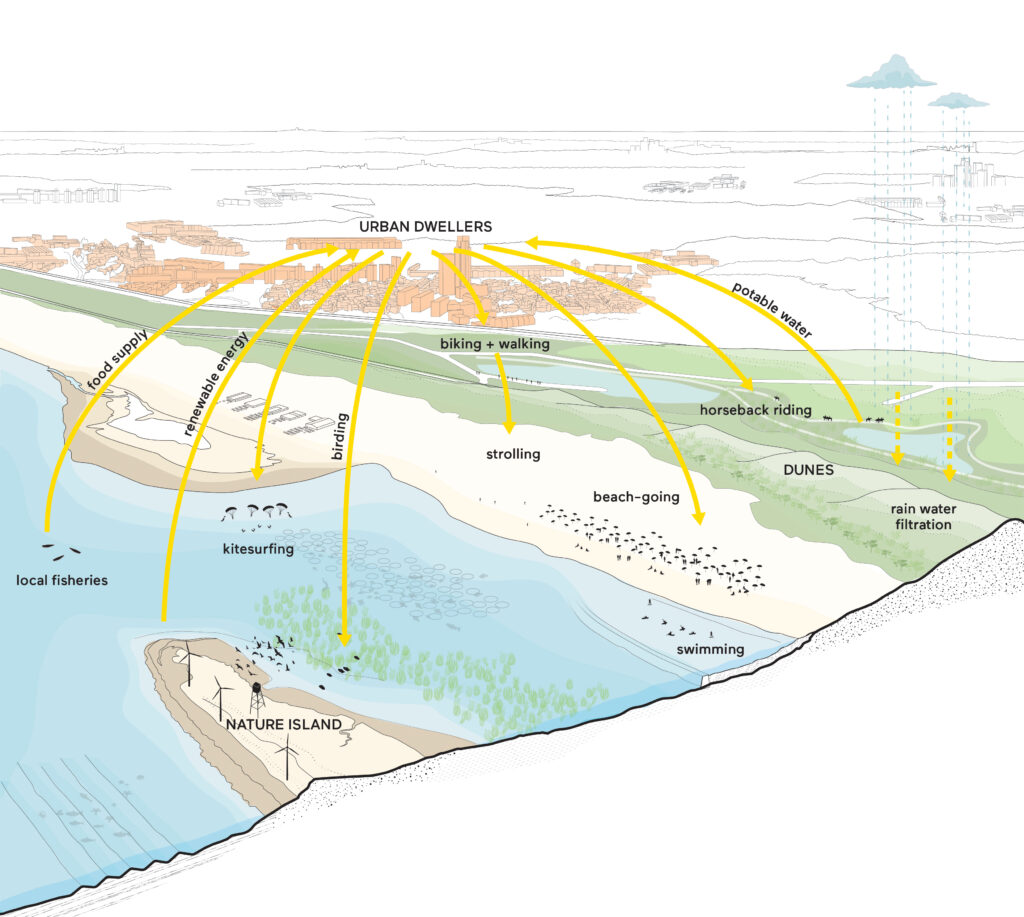
Resource flows
The material composition of sandy coasts reflects the cumulative effect of the forces acting on them since the last ice age: rivers that transport sand and gravel to the sea, gradual erosion of the coastal cliffs, and waves that carry debris, fragmented shells, and sand. Waves and wind continuously reshape, transform, and redistribute sediment within the landscape. Part of the dynamism underpinning all sandy coasts comes from the materials that are supplied to and extracted from these environments. Sustaining coastal landscapes requires a nuanced understanding of qualities and characteristics of local sediment and the finite availability of these resources. Additional sand, often extracted from the sea-bottom at offshore borrow sites, is essential to the preservation of beaches and dunes and will grow more urgent with increased climate-change pressure. Wind, waves, and tides offer promise in the emerging market for renewable energy. Novel technologies seek to harness these dynamic forces for energy generation.
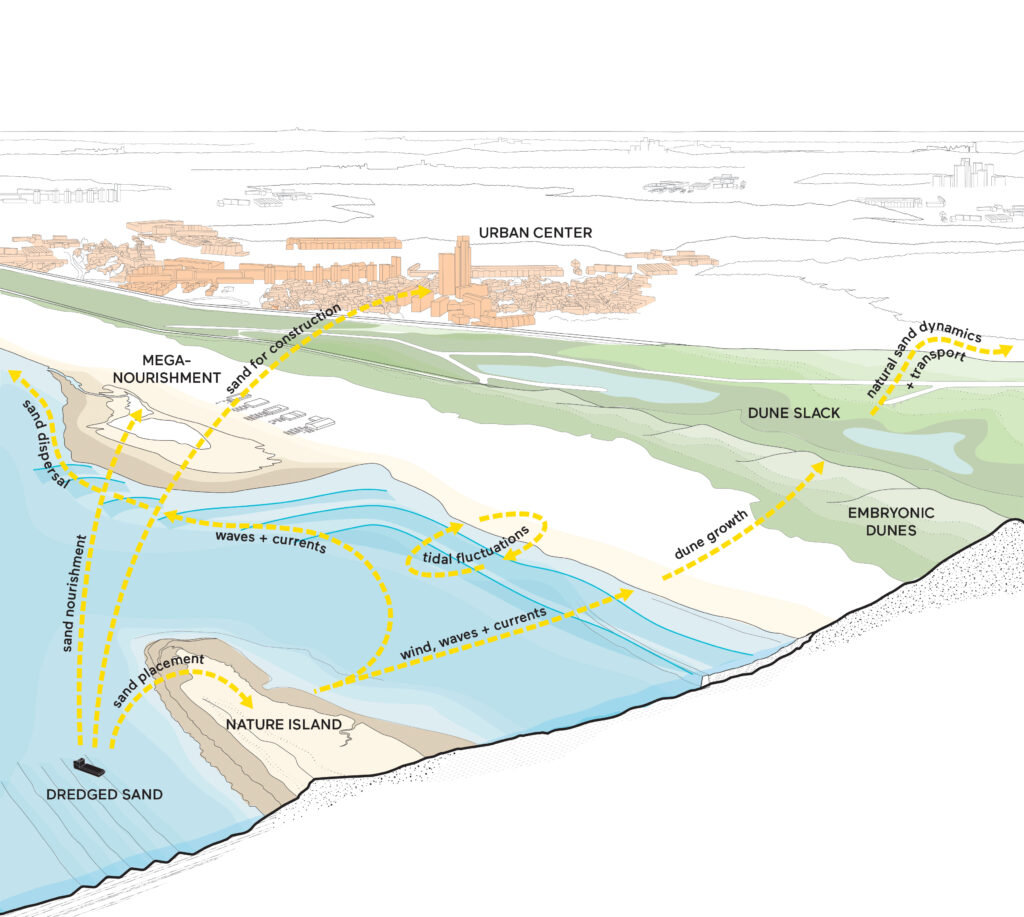
Integrated Approach
Sandy coasts are subjected to numerous pressures from natural systems, flood protection infrastructure, recreation, urban development, and coastal industries. Each brings its own tradition in governance and a regulatory background that describes a distinct path of action to consider any new issue, from recreation and industrial development to flood risk management and climate adaptation. More broadly, Building with Nature requires engaged decision-making from multiple levels of government and their agencies. For example, the construction and maintenance of coastal protection systems in the Netherlands requires participation from agencies within the national and regional governments and their local partners, whereas NGOs and advocacy groups are seen as interested parties outside the framework of government. Institutional embedding — the process of normalizing and internalizing interactive policy-making in governments — operates in multiple dimensions to enable Building with Nature projects. Changing administrative practices, laws and regulations, and political sentiments and pressures all play a role. The reality is that collaboration at multiple levels of government or across multiple municipalities and regional entities is rarely seamless, and coastal administration is often fragmented. Finding ways to bring stakeholders to the table, to understand their interests and capabilities, and to co-create governance structures that enable commitment for the realization of these projects are the fundamental challenges in all localities.
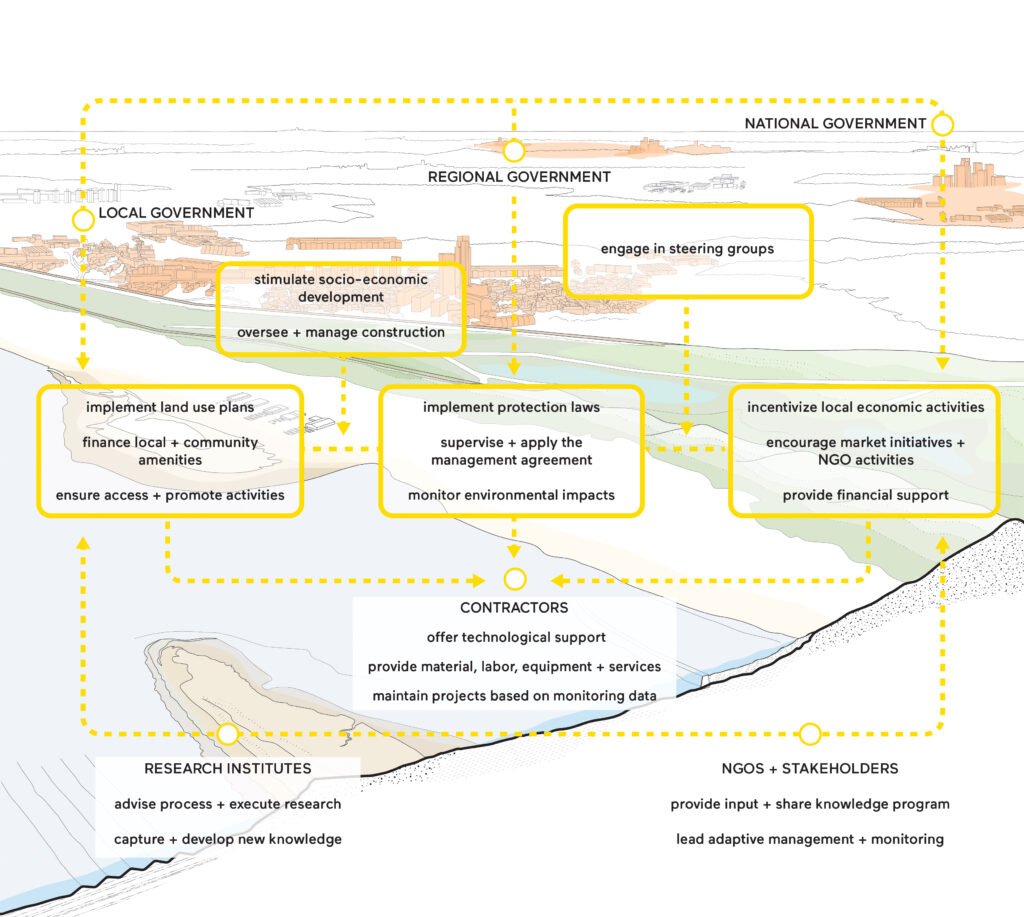
The Details
Get more insight in the driving physical and natural processes that shape a sandy coast, and all the benefits that this landscape creates by visiting our in-depth landscape description of the sandy coast read more
